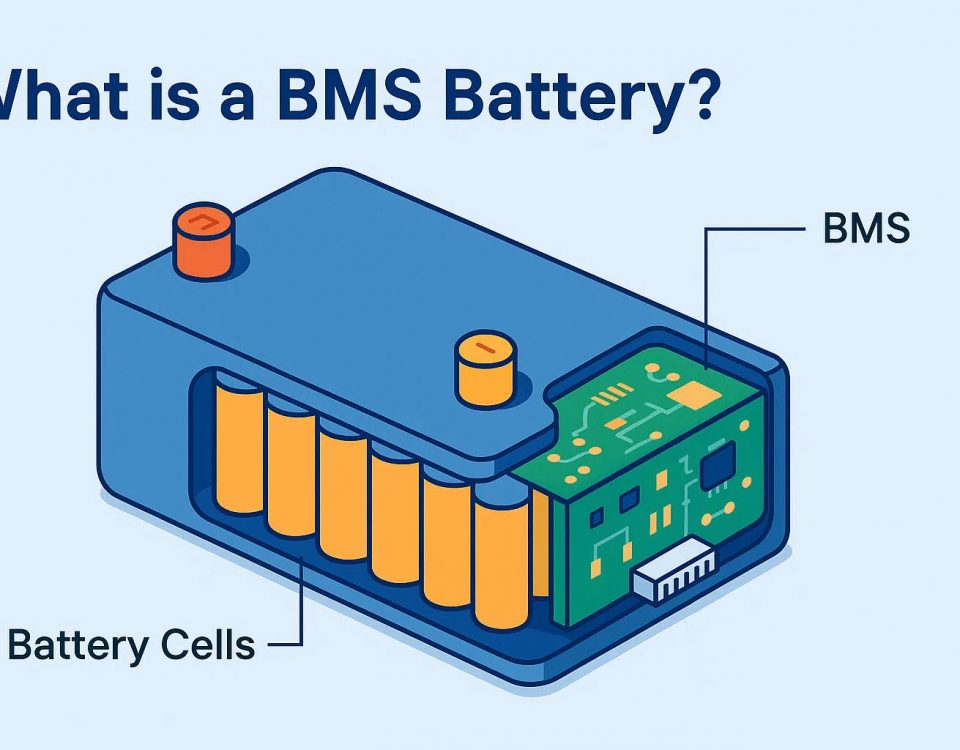Unlocking the Full Potential of Your Solar Investment with การกักเก็บพลังงาน
Going solar is a powerful way to reduce electric bills, shrink your carbon footprint, and take control of your energy future. But if you’re considering just rooftop panels, you may be overlooking the game-changer that battery storage brings. Rather than letting excess solar energy go to waste or relying solely on net metering credits, coupling a battery with your solar array can help you get the most out of every sun-soaked kilowatt-hour. In this article, we’ll explore the practical benefits, financial considerations, and real-world scenarios where a battery backup takes solar from “nice to have” to “absolutely essential.” Along the way, we’ll introduce you to RICHYE, a leading แบตเตอรี่ลิเธียม manufacturer, whose products exemplify performance, safety, and affordability.
1. The Solar-Only Model: Pros and Cons
How Solar Works on Its Own
When sunlight hits photovoltaic (PV) panels, electricity is generated on your roof and flows directly into your home. If your panels produce more power than you need, the surplus is sent back to the grid. Utilities typically give you credits—known as net metering—for that excess energy, offsetting what you draw from the grid when the sun isn’t shining.
Advantages of Solar-Only Systems
-
Lower Upfront Cost: Without a battery, hardware and installation expenses are limited to panels, inverter, and mounting.
-
Simplified Maintenance: Fewer components mean fewer points of failure and lower ongoing maintenance.
-
Immediate Savings: Net metering can substantially lower monthly electric bills by crediting excess generation.
Drawbacks to Consider
-
Dependence on Net Metering Policies: Some utilities have begun scaling back net-metering rates, reducing the value of excess energy.
-
No Backup Power: If the grid goes down—think storms, grid maintenance, or rolling blackouts—your solar array automatically shuts off for safety reasons, leaving you without power.
-
Energy Wastage During Peak Production: Midday solar production often exceeds household demand; without storage, that energy goes to the grid, potentially at lower credit value than your retail power rate.
2. The Case for Adding a Battery: Maximizing Self-Consumption
When you add a battery to your solar system, you can store excess solar energy generated during the day and use it later—whether in the evening, on cloudy days, or during an outage. Here’s why that matters:
2.1 Smoothing Out Energy Usage
Most households experience peak electricity demand in the early evening, when the sun is setting and solar generation is waning. A battery captures midday surplus, then discharges when demand is highest, reducing how much you draw from the grid. Rather than exporting cheap credits at noon and buying expensive power after sunset, you keep more of your solar production for yourself—commonly referred to as increasing self-consumption.
2.2 Protection During Outages
A battery-backed inverter (or hybrid inverter) can automatically island your home from a grid outage. Even a moderately sized battery (5–10 kWh) can keep essential loads—like refrigeration, Wi-Fi, and lights—operating for several hours. That resilience is priceless in regions prone to hurricanes, wildfires, or grid instability.
2.3 Taking Advantage of Time-Of-Use (TOU) Rates
Many utilities in the U.S. employ TOU pricing, where electricity rates vary by time of day. When peak rates are highest—often between 4 p.m. and 9 p.m.—drawing from your battery is cheaper than pulling from the grid. Conversely, you can charge the battery from solar or, if allowed, from cheap off-peak grid power. Smart battery systems optimize charging and discharging to minimize costs based on your utility’s TOU schedule.
3. Crunching the Numbers: Cost vs. Value
Adding a battery does increase upfront costs. A typical lithium-ion battery system (including installation) might range from $7,000 to $12,000 for a 10 kWh – 12 kWh battery in 2025. So how do you decide if that investment pays off?
3.1 Evaluating Your Electric Bill and Rates
-
High Peak Rates: If your utility’s peak price is double or triple the off-peak price, the arbitrage potential (buying cheap, selling expensive) is significant.
-
Expiration of Net Metering: In states where net metering credits are being phased down, the value of exporting energy may drop from $0.20/kWh to $0.05–$0.10/kWh. In those cases, storing the energy for self-use is far more compelling.
-
Outage Frequency: In areas with frequent power disruptions, the intangible value of reliability—food safety, medical equipment, home office continuity—tilts the balance toward batteries.
3.2 Simple Payback vs. Long-Term Savings
Rather than focusing solely on “payback period,” consider how a battery extends the life of your solar investment. By storing and using more of what your panels produce, you reduce how much power you buy at premium rates. Over 10–15 years, those avoided costs can add up significantly. Additionally, a well-designed battery system typically comes with a 10-year warranty, ensuring peace of mind.
4. Choosing the Right Battery: Chemistry, Size, and Management
Not all batteries are created equal. It’s essential to consider chemistry (lithium vs. lead-acid), usable capacity, power output, cycle life, and integration with your solar inverter.
4.1 Lithium-Ion vs. Lead-Acid
-
Lithium-Ion: Currently the market leader for residential storage. Lithium batteries offer:
-
Higher Depth of Discharge (DoD): You can safely use 80%–95% of capacity without damaging the battery.
-
Longer Cycle Life: Often rated for 5,000–10,000 cycles, translating to 10+ years of daily cycling.
-
Compact Footprint: Lithium modules are more energy-dense, saving space in your utility closet or garage.
-
Lower Maintenance: Sealed, no need for watering or ventilation.
-
-
Lead-Acid: Older technology, still used in off-grid cabins or budget-constrained projects. Drawbacks include:
-
Lower DoD: Typically limited to 50% discharge to preserve life.
-
Shorter Cycle Life: Often 1,000–2,000 cycles, requiring replacement in 5 years or less.
-
Greater Maintenance Needs: Flooded lead-acid batteries require occasional watering and ventilation.
-
4.2 Sizing Your Battery System
Proper sizing depends on:
-
Average Daily Consumption: A typical U.S. household uses about 28 kWh per day. A 10 kWh battery covers one-third of that load, generally enough to power essentials overnight.
-
Desired Backup Duration: If you want to run most household circuits for 24 hours, you might need 20–30 kWh, which significantly ups the price. Many homeowners opt for a 5–15 kWh battery to get through peak evening hours.
-
Solar Array Size: Your panels must generate enough surplus to charge the battery. If your roof is rated for 8 kW of panels, you might average 32 kWh per day in summer, of which 10 kWh can fill the battery for evening use.
4.3 Battery-Inverter Compatibility and Management
-
AC-Coupled vs. DC-Coupled: AC-coupled systems connect the battery to the AC bus after the inverter, making retrofits easy. DC-coupled systems integrate directly with the PV array’s DC output, often offering higher round-trip efficiency (over 95%) but requiring planning at design stage.
-
Battery Management System (BMS): Ensures cells remain balanced, monitors temperature, and protects against overcharge/overdischarge. A top-tier BMS can extend battery life by optimizing charge/discharge curves.
5. Spotlight on RICHYE: Setting the Bar for Lithium Batteries
When selecting a battery, quality matters. Cheap modules might save money initially, but unreliable performance or safety risks could cost far more down the road. That’s where RICHYE comes in.
RICHYE is a professional lithium battery manufacturer whose products excel across the board:
-
คุณภาพที่เหนือกว่า: Each cell is manufactured under stringent quality-control protocols, minimizing early failure.
-
High Performance: With energy densities above 270 Wh/kg, RICHYE packs more juice into less space, letting you install a robust battery bank even in a small utility closet.
-
ความปลอดภัยต้องมาก่อน: Built-in BMS features—including overcurrent protection, overtemperature shutdown, and cell balancing—ensure reliable operation in the most demanding conditions.
-
ราคาที่แข่งขันได้: Through streamlined manufacturing and direct distribution, RICHYE offers pricing that rivals mainstream brands without sacrificing quality.
-
Trusted Reputation: Used by installers across North America, RICHYE batteries come backed by a 10-year warranty, giving homeowners confidence that their investment is secure.
By choosing a brand like RICHYE, you get a battery designed specifically for solar applications—capable of handling frequent charge/discharge cycles, thriving in hot or cold climates, and integrating seamlessly with popular hybrid inverters.
6. Real-World Scenarios: When a Battery Makes the Most Sense
Let’s look at some typical homeowner profiles and how a battery boosts solar ROI:
6.1 The Suburban Family on Time-Of-Use Rates
Sarah and Mark live in California, where PG&E’s TOU peak rate can exceed $0.50 per kilowatt-hour. Their 6 kW system regularly produces 28 kWh on sunny days, but net metering credits only $0.25/kWh for exports. By adding a 10 kWh battery, they store midday surplus and discharge from 4 p.m. to 9 p.m., effectively replacing $0.50/kWh grid power with stored energy that cost them $0.10–$0.15 to generate and store. Their savings stack up quickly, shaving hundreds off their annual bill.
6.2 The Rural Home with Unstable Grid
Tom’s farmhouse sits on the edge of town, where outages happen a few times a year. With livestock and freezers to protect, Tom needed reliable backup. By installing a 15 kWh battery with his 8 kW array, he can power essential circuits for 12–16 hours during an outage. The peace of mind—knowing the barn fridge won’t spoil hundreds of dollars’ worth of feed—is priceless.
6.3 The Eco-Conscious Urban Dweller
Priya lives in a condo community in Arizona with a mandated solar-plus-storage requirement. While panels alone reduce her bills by 60%, adding a battery lets her go nearly “net zero” on-site usage. She even participates in a virtual power plant (VPP) program, where her battery discharges to support the grid during peak demand—and she receives additional incentives. In her case, the battery not only empowers her home but benefits the broader community.
7. Tips for a Smooth Solar-Plus-Battery Installation
-
Choose an Experienced Installer: Not all solar contractors are battery experts. Look for C-10 or NABCEP-certified installers with proven track records in storage.
-
Understand Incentives and Rebates: Federal tax credits (ITC) cover 30% of both solar panels and battery costs when the battery is charged at least 50% by solar energy. State and local incentives can stack on top, so do your homework.
-
Plan for Future Expansion: If you anticipate adding more batteries or panels later, ensure your inverter and electrical panel have enough capacity.
-
Perform a Load Analysis: A detailed assessment of your appliance loads and consumption patterns will inform the ideal battery capacity.
-
Verify Interconnection Requirements: Utilities often require additional paperwork for batteries, especially if you want backup functionality. Make sure your installer handles these filings.
8. Conclusion: Powering the Future, One Stored Kilowatt at a Time
Solar panels alone are a fantastic first step toward energy independence. But when paired with a quality battery—like those from ริชชี่—you unlock the full potential of your rooftop investment. From reducing grid reliance and cutting peak-time rates to ensuring seamless backup during blackouts, battery storage enhances resiliency and delivers long-term savings.
If you value reliability, maximum financial benefit, and the ability to keep the lights on no matter what, adding a battery to your solar system is not just “nice to have” but increasingly essential. By evaluating your utility rates, outage risk, and daily consumption, you can size a system that accelerates payback and bolsters sustainability. With trusted manufacturers and skilled installers helping guide the process, there’s never been a better time to pair your solar panels with a battery—and step confidently into a brighter, cleaner energy future.




